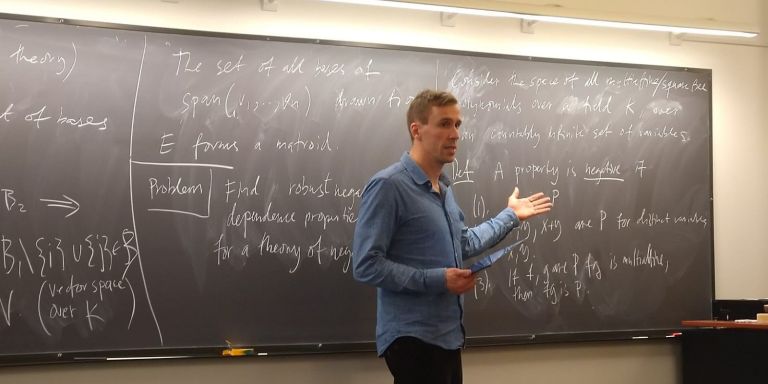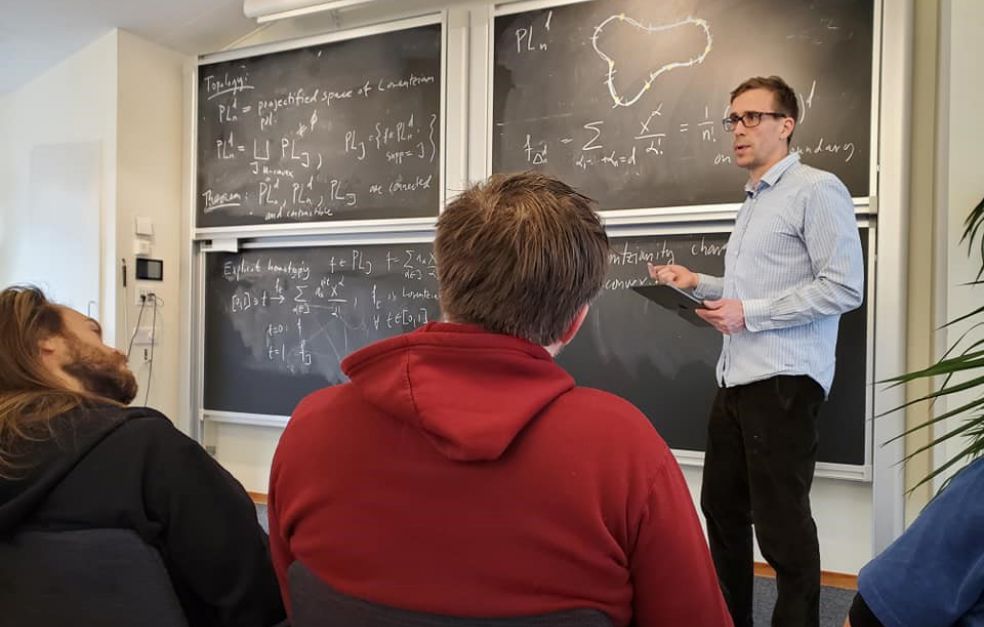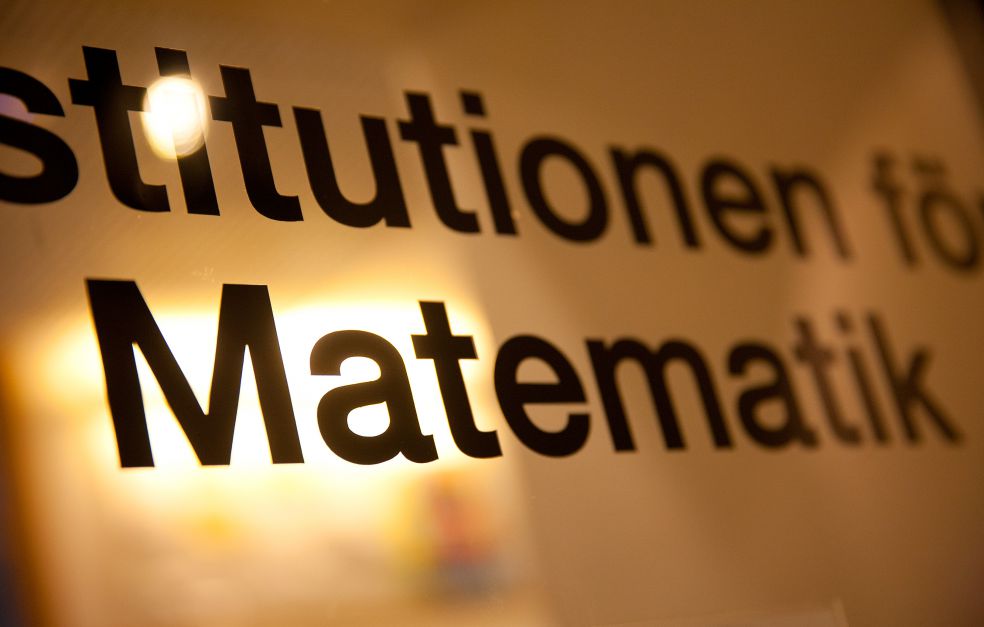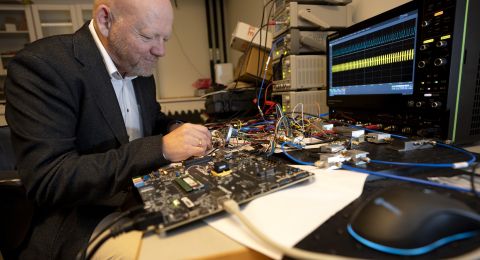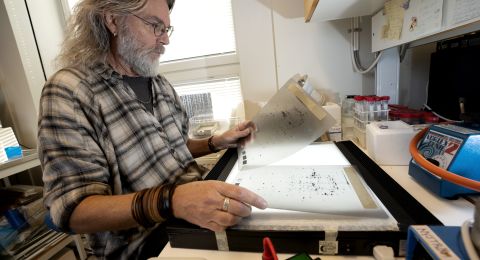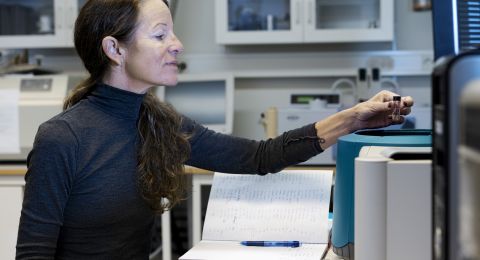Petter Brändén does research in combinatorics and the geometry of polynomials. He is now further developing a successful theory that combines phenomena in mathematics that are common to algebra, computer science, statistical mechanics and combinatorics. The theory has yielded solutions to difficult problems.
Petter Brändén
Professor of Discrete Mathematics
Wallenberg Academy Fellow, prolongation grant 2019
Institution:
KTH Royal Institute of Technology
Research field:
Algebraic combinatorics and zero distribution of polynomials
Mathematics is traditionally a discipline for lone wolves, Brändén explains.
“However, it is of course great if you can find researchers possessing complementary expertise to use as a sounding board and to work with. In my case it might be PhD students or postdocs in my research team, or colleagues at other universities.”
When everything falls into place, pennies may finally start to drop. This is what happened in Brändén’s successful collaboration with June Huh, a U.S. mathematician at Princeton University. By pooling their wisdom they managed to solve difficult open mathematical problems in the field of combinatorics.
“Together we managed to solve a problem that had existed since the 1970s, known as ‘Mason’s Conjecture’ in matroid theory. It was a very successful project, and our work attracted much interest. It also resulted in a toolbox that can be used to solve similar problems in the future. I’m now collaborating with a number of researchers to further refine the tools. This is currently a hot area of mathematics, where I’m one of the pioneers.”
Ever since his time as a PhD student Brändén has been interested in relationships between combinatorial structures and zeros of polynomials, i.e., where the value of the function is zero (see fact box). Over the years he has developed new theories capable of solving central problems in combinatorics, computer science, probability theory and statistical mechanics.
“In many areas of mathematics one studies continuous curves and functions, but in combinatorics we study discrete structures, such as the number of ways a task can be performed. Much of game theory is combinatorics. One studies finite structures with a number of components, and how they interact.”
Polynomials from two perspectives
From one angle polynomials are, somewhat simplified, a book-keeping device. Brändén explains:
“If you have a large quantity of data that has been collected, it needs to be collated in some way. This can be done using polynomials. They are traditionally studied in algebra, one of the oldest branches of mathematics. Here one studies the zeros of polynomials, and much of my research has been to investigate what the zeros to polynomials occurring in combinatorics can tell us about the combinatorial structure, and vice versa.”
One area of Brändén’s research is dependence. Equations or events in probability theory may be dependent on one another, for example.
“The opposite is that variables or vectors are independent of each other. The methods I’ve been developing may be very useful for proving dependence and independence.”
Matroid theory is a theory that models combinatorial dependence. Brändén elaborates:
“The theory was developed from the 1930s to the 1970s. It was studied intensively in the sixties and seventies, which was when numerous open questions arose. Up until 2010 no one had solved them, but it was then that June Huh managed to solve some of these open questions using methods from algebraic geometry. We approached the problems from different angles, but managed to combine our methods to create a new theory, and a toolbox which we used to solve further problems.”
Brändén thinks that their theory, which goes under the name “Lorentzian polynomials”, has attracted much attention because it combines mathematics from different scientific disciplines under a single umbrella.
“It brings together different phenomena that we found have the same fundamental characteristics. These include problems in geometry, algebra, statistical mechanics and combinatorics that have a common denominator – Lorentzian polynomials.”
With the help of funding from Knut and Alice Wallenberg Foundation, Brändén is continuing to develop the theory.
“There are certain problems in matroid theory that cannot be tackled with the models we have developed so far. But I have great hopes that we’ll manage to do that by further developing the theory.”
“Researchers in mathematics often have a lot of teaching to do. Thanks to this grant, I can cut down my teaching hours. This will enable me to focus and delve deeper into difficult problems.”
Attracted to problems and theory
As a senior researcher, Brändén views his work a little differently than when he joined KTH Royal Institute of Technology.
“I’m a little wiser, having acquired a fair amount of knowledge along the way – a ‘library’ where I can find analogies to solve new problems. It’s often said that mathematicians are either theory builders or problem solvers. These days I like to think I’m both.”
Brändén’s main tools are paper and pen, preferably a free-flowing fountain pen. The nature of the creative process varies. In some cases it takes a long time before solutions manifest themselves. Other times, progress is swift.
“When June and I began to discuss Lorentzian polynomials, the penny dropped fairly quickly. Within just a few months we had developed a theory.
Text Susanne Rosén
Translation Maxwell Arding
Photo Anna Pun Ying, Cordian Riener, Jann Lipka, Magnus Bergström

